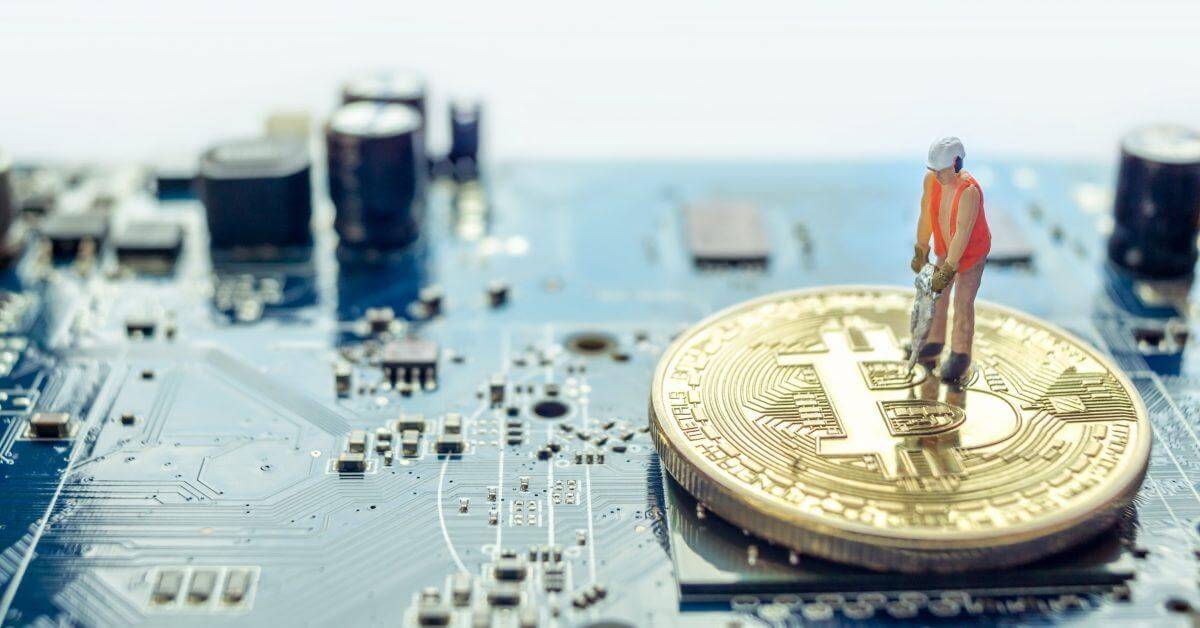Contributing spare processing power to the Bitcoin network in exchange for BTC has made “Bitcoin mining” a popular hobby. Several miners have joined mining pools to boost their chances of getting a share of the profits as the mining difficulty rises and the rivalry for block rewards heats up. This post will explain Bitcoin mining pools, their function, their types, and how to choose the best pool for your needs. Whether you’re an experienced miner or just getting started, you’ll find our guide to Bitcoin mining pools a wealth of information.
What Are Bitcoin Mining Pools?
To boost their odds of successfully mining blocks on the Bitcoin blockchain network, a group of miners will often form a “mining pool.” To speed up solving these complex mathematical problems and validating transactions on the web, miners may join a mining pool and work together. In a mining pool, miners share the payout for a block by contributing to the pool. By working together in a mining pool, miners may increase their chances of making a profit and reduce the risks associated with mining. Mining pools have surged in popularity as it is now more difficult for individual miners to compete profitably for rewards.
How Bitcoin Mining Pools Work?
Bitcoin mining pools allow many miners to combine their processing power to maximize their chances of discovering a block and receiving a reward. This is how it goes down:
Joining A Mining Pool
To join a mining pool, miners generally register with a pool operator and contribute their computer power (measured in hashrate) to the pool. In most cases, miners must register with the pool administrator and set up their mining program to communicate with the pool’s mining server. Mining gear added by members after joining will add to the pool’s overall hashrate.
Solving Complex Math Problems
The mining rigs of the pool’s participants work together to solve complex mathematical tasks assigned to them by the pool operator. Finding a hash value that satisfies the network’s difficulty standards is at the heart of these challenges.
Finding a Block
A block reward is given to a pool when a member’s mining rig discovers a valid block hash that satisfies the network’s difficulty standards; this reward is then divided among the pool members in proportion to their contributions. Newly created Bitcoins and fees from the blocks’ transactions make up the block reward. Rewards are currently capped at 6.25 BTC per block and are half every 210,000 blocks.
Distributing Rewards
Members of the pool are often compensated on a pay-per-share (PPS) or proportionate basis. Under a balanced approach distributes, the pool rewards the members according to their hashrate contributions. A miner’s share of the block reward is proportional to the amount of hashrate they contributed to the pool. Whether a block is identified or not, with a PPS system, the pool will always pay the same amount for each valid share submitted. The system’s rewards are more stable, but the pool’s profitability may suffer if it does not locate many blocks.
Pool Fees:
The pool operator takes a cut of the mining earnings before distributing them to the participants, often between 1% and 2%. They receive income from this charge, which is used to pay the expenses of maintaining the pool’s servers and software. Often, the charge is taken out of the members’ incentives before they are sent out.
Types of Bitcoin Mining Pools
Bitcoin miners may choose from various mining pools, each with its pros and cons. By the type of payout, mining pools can be divided into the following:
Pay-Per-Share (PPS) Pools
PPS pools have greater entry fees than most other pools yet consistently generate profits. With PPS pools, miners are compensated for each submitted share at a predetermined rate, regardless of whether a block is discovered. This ensures that miners always get paid for their efforts, irrespective of whether the pool finds a block.
Full Pay-Per-Share (FPPS) Pools
Like PPS pools, FPPS pools share block rewards and transaction fees across miners. This pool structure has the potential to earn more than a standard PPS pool but may need more significant investment.
Proportional Pools
With proportional pools, miners get paid directly for the amount of effort they put in. A miner’s share of the block reward is proportional to the amount of hashrate they contributed to the pool. The payments from this pool tend to be lower for smaller miners but may be more significant for miners with higher hashrates.
Pay-Per-Last-N-Shares (PPLNS) Pools
Typically, miners in PPLNS pools only get paid for their most recent N-submitted shares. Each miner’s payment is determined by the pool’s hash rate and the number of shares they have contributed throughout the payout period. Nevertheless, PPLNS pools may be less beneficial for miners with lower hashrates since they offer a more stable income for miners and lessen the danger of pool-hopping.
Solo Mining Pools
Bitcoin miners may use solo mining pools to continue their operations independently of other miners. By combining the advantages of solo and pool mining, solo mining pools enable miners to get consistent rewards while keeping ownership of their gear. Because of the extreme difficulty and limited odds of obtaining a block, solo mining is not advised for individual miners.
What Qualities Should a Good Bitcoin Mining Pool Have?
Bitcoin miners need to choose which mining pool to join carefully. One may maximize earnings potential with the correct pool, but losses might occur with the wrong one. Before deciding on a Bitcoin mining pool, keep these things in mind.
The hashrate and the probability of discovering a block depend on the pool’s size. While smaller pools have a better likelihood of making a profit for individual miners, larger pools have a greater possibility of discovering blocks.
Most mining pools will charge a modest fee for using their service, which might affect your profits. The best mining pool for you will have low costs, so shop around.
Pools’ payout structures and frequencies may be affected by the payment mechanism, ranging from PPS and PPLNS to proportional payments. Each miner must evaluate their own circumstances to determine the optimal kind of compensation.
One crucial aspect of evaluation is how open the pool is about its operations and costs. Miners must choose a pool with a transparent fee structure and distribution method.
Historically, the pool’s uptime, payments, and the operator’s reputation are crucial factors. Before joining a mining pool, miners should check out its history and feedback from other users.
Technical issues and other complaints need first-rate support services. However, if you don’t think pooling is your choice and simply want to be a part of the crypto world, try auto trading platforms like Crypto Boom. These platforms enable users to make their first move.
Conclusion
By pooling computer resources and splitting the profits, Bitcoin mining pools allow miners to mine Bitcoin more efficiently and profitably. By working together in a pool, miners may increase their earnings and decrease the risks associated with mining. But not all pools are created equal, and picking the correct one requires thinking about pool size, fees, payment options, transparency, reputation, and customer service, just to name a few. Miners may make a lot of money by joining Bitcoin mining pools, but only if they do their homework and assess the situation thoroughly.


